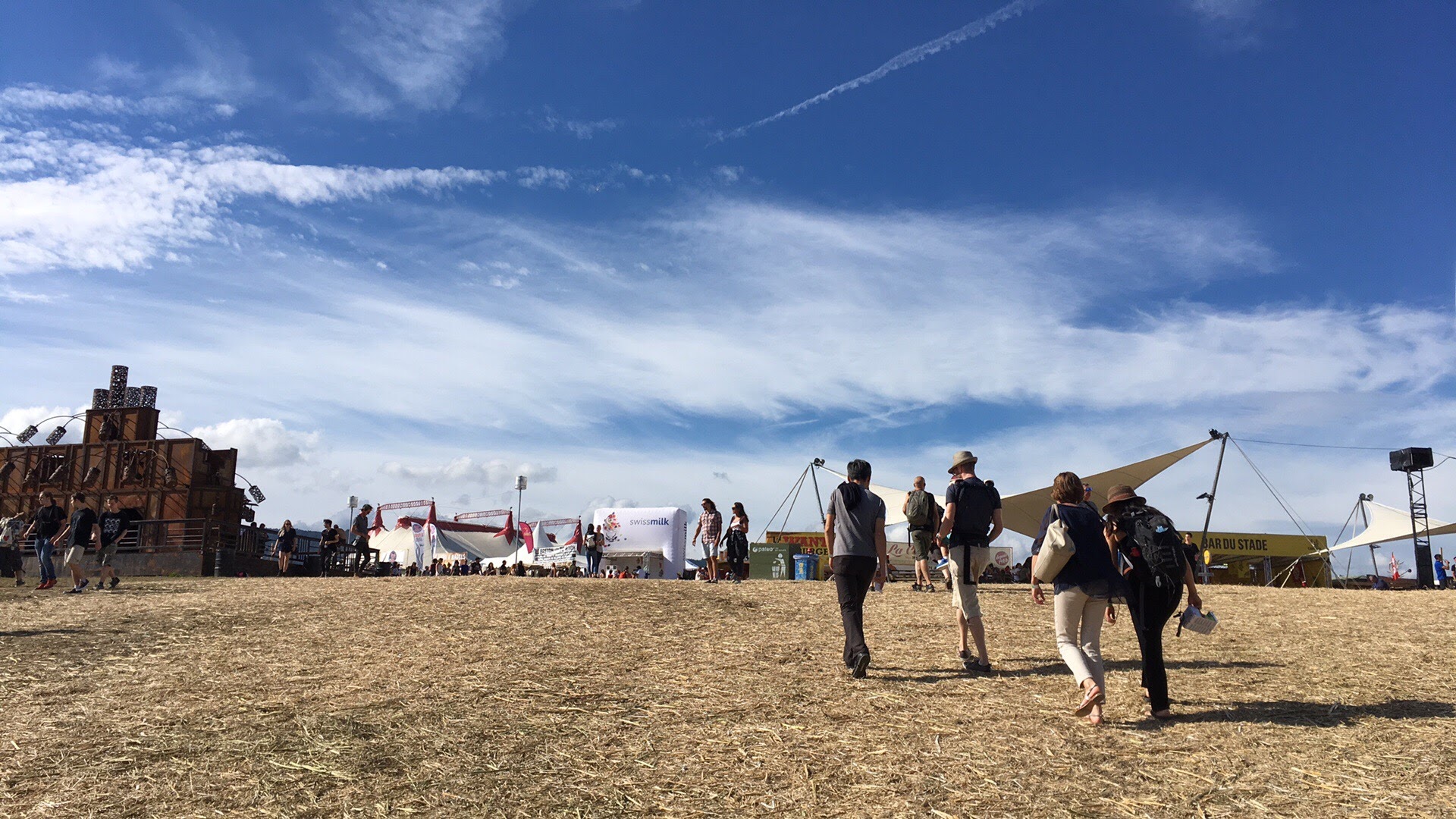Table of Contents
A Dry Paléo after the rain
A dry Paléo is as normal as a wet one. On Friday and Saturday if you went to Paléo you would hear the sploutch sploutch of shoes walking through mud. Along with the sploutch sploutch you would also hear the noise of people slipping and catching themselves. Surprisingly people only had dirty shoes. Even their trousers were intact.
It’s the grass that suffered. On Sunday when I went to Paléo I could take some amusing images. Look at the image below. During the rest of the year this is a grassy field. During Paléo you can see desertification in action. They put hay down on the dry mud and the result is what you see below.

This year the temperatures were relatively cool during the Paléo Festival but some people still sheltered from the sun. I like to think that those sheltering from the Sun have already enjoyed several days of Paléo and feel the need to recover before the last night’s activities.

During most of the year Switzerland is wet and green but during a few weeks in summer the landscape turns yellow due to the dry weather. On Friday there was a warning to stop pumping water from rivers. They issued this warning because they wanted to make sure that the temperature of river water would not get above 26°c.
I like the image of these people walking towards Paléo restaurants because the landscape looks so dry and desolate. There is no sign of green. It looks parched. One person said of this image that it looks as if it could have been taken at Burning Man. Neither of us has been so we can pretend that’s the case.

When tens of thousands of people churn up the mud and grass the grass doesn’t stand a chance. It gets buried under the mud and as the mud dries we see an “arid” landscape.

If you look on Google Maps you will see that the traces of Paléo are evident every single year. As Autumn and Winter approach the traces of Paléo are gone. The fields go back to being grass and they rest. The effects of the festival are short lived.

Leave a Reply